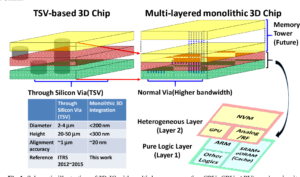Clone IC AT80F52 Firmware
Clone IC AT80F52 Firmware and reprogram the content which include flash program and eeprom data into the blank Microcontroller AT80F52, original MCU reading will be completed by crack MCU security system;

Clone IC AT80F52 Firmware and reprogram the content which include flash program and eeprom data into the blank Microcontroller AT80F52, original MCU reading will be completed by crack MCU security system
The AT80F52 devices contain an 8-bit ALU and working register. The ALU is a general purpose arithmetic unit. It performs arithmetic and Boolean functions between data in the working register and any register file.
The ALU is 8 bits wide and capable of addition, subtraction, shift and logical operations. Unless otherwise mentioned, arithmetic operations are two’s complement in nature.
In two-operand instructions, one operand is typically the W (working) register. The other operand is either a file register or an immediate constant. In single operand instructions, the operand is either the W register or a file register before restore mcu sst89e58rd2a code.
The W register is an 8-bit working register used for ALU operations. It is not an addressable register. Depending on the instruction executed, the ALU may affect the values of the Carry (C), Digit Carry (DC) and Zero (Z) bits in the STATUS register.
The C and DC bits operate as a borrow and digit borrow out bit, respectively, in subtraction. See the SUBWF and ADDWF instructions for examples. A simplified block diagram is shown in Figure 3-1 and Figure 3-2, with the corresponding device pins described in Table 3-2.
The clock is internally divided by four to generate four non-overlapping quadrature clocks, namely Q1, Q2, Q3 and Q4. Internally, the PC is incremented every Q1 and the instruction is fetched from program memory and latched into the instruction register in Q4.
It is decoded and executed during the following Q1 through Q4. The clocks and instruction execution flow is shown in Figure 3-3 and Example 3-1.
An instruction cycle consists of four Q cycles (Q1, Q2, Q3 and Q4). The instruction fetch and execute are pipelined such that fetch takes one instruction cycle, while decode and execute take another instruction cycle.
However, due to the pipelining, each instruction effectively executes in one cycle. If an instruction causes the PC to change (e.g., GOTO), then two cycles are required to complete the instruction (Example 3-1). A fetch cycle begins with the PC incrementing in Q1.
In the execution cycle, the fetched instruction is latched into the Instruction Register (IR) in cycle Q1. This instruction is then decoded and executed during the Q2, Q3 and Q4 cycles. Data memory is read during Q2 (operand read) and written during Q4 (destination write).
The AT80F52 devices have a 9-bit Program Counter (PC) capable of addressing a 512 x 12 program memory space. Only the first 256 x 12 (0000h-00FFh) for the PIC10F200/204 are physically implemented (see Figure 4-1). Accessing a location above these boundaries will cause a wraparound within the first 256 x 12 space.
The effective Reset vector is at 0000h (see Figure 4-1). Location 00FFh (PIC10F200/204) contains the internal clock oscillator calibration value. This value should never be overwritten.
Tags: cloning ic software archive,cloning ic software binary,cloning ic software code,cloning ic software content,cloning ic software data,cloning ic software eeprom,cloning ic software file,cloning ic software firmware,cloning ic software heximal,cloning ic software information,cloning ic software memory,cloning ic software program

